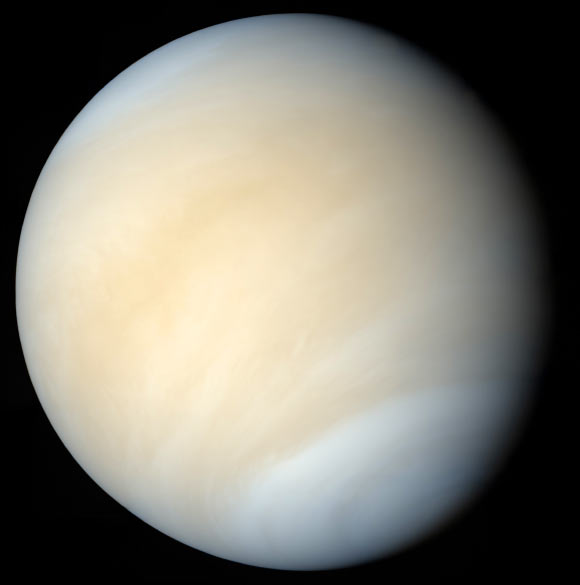Astronomers Successfully Detect Atomic Oxygen Directly on Venus.
Atomic oxygen is generated on the daytime side of Venus through the photolysis of carbon dioxide and carbon monoxide.
Venus, renowned for its leisurely rotation, experiences a day lasting the equivalent of 243 Earth days. Within the mesosphere and thermosphere of this planet, crucial atomic oxygen emerges on its dayside through the photolysis of carbon dioxide and carbon monoxide, subsequently migrating to the nightside. Despite its significance in Venus’s atmospheric photochemistry and energy equilibrium, direct observations of atomic oxygen on the dayside had not been achieved.

Previous detections on the nightside were restricted to scrutinizing the faint night airglow—a subtle emission of light by the planetary atmosphere. In a recent investigation, Dr. Heinz-Wilhelm Hübers, a researcher affiliated with the Deutsches Zentrum für Luft- und Raumfahrt and the Humboldt-Universität zu Berlin, alongside colleagues, meticulously analyzed 17 points on both the dayside and nightside of Venus. Leveraging NASA’s Stratospheric Observatory for Infrared Astronomy (SOFIA) airplane and the German Receiver for Astronomy at Terahertz Frequencies (upGREAT) array spectrometer, they conducted observations during the early evenings of November 10, 11, and 13, 2021.
The researchers identified atomic oxygen at all observed points, concentrated at altitudes of approximately 100 km. The measurements centered on the atomic oxygen ground state fine structure at 4.74 Terahertz. Noteworthy variations in column densities were observed, with the highest density recorded on the dayside. The average Venus continuum brightness temperature was noted at around 246 K, corresponding to an altitude of about 65-70 km just above the cloud layer.
Further insights revealed the temperature of atomic oxygen to be approximately 156 K on the dayside and about 115 K on the nightside, corresponding to altitudes around 100 km.
The researchers anticipate that future observations, particularly near the antisolar and subsolar points, as well as across various solar zenith angles, will provide a more comprehensive understanding of this distinctive region. Such data is expected to support upcoming space missions to Venus, including NASA’s DAVINCI mission and ESA’s EnVision mission. Together with measurements from Earth and Mars, these findings hold the promise of enhancing our comprehension of the unique atmospheric characteristics that differentiate Venus and Earth.
The findings were published in the journal Nature Communications.
Do not forget to share your opinion with us to provide you with the best posts !



0 Comments